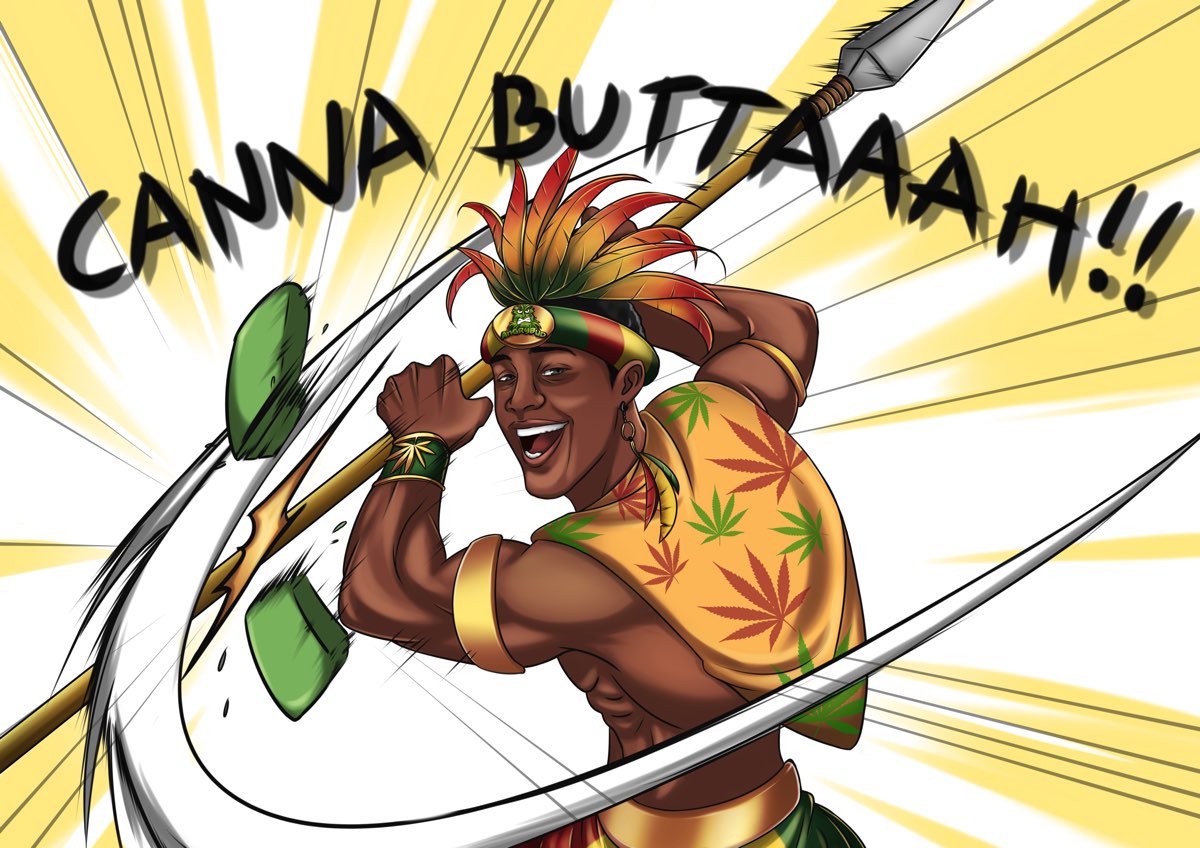How to make Cannabutter
Cannabutter is a clear combination of “cannabis” and “butter”, also referred to as marijuana butter or weed butter. Cannabutter is the word we employ in the cannabis space for infused butter. Call it an industry standard or a stoner’s slang, if you wish, it does not change the idea:
— Cannabutter is regular butter with the active marijuana compounds, like THC, emulsified in it. Cannabutter is as high as marijuana itself (usually much higher) if you eat it.
Our best directions for weed butter cooking start just below in this post, but beforehand we cite a collection of noteworthy information you’d better acquire once you are on the cannabutter making quest.
How strict are the temperature rules, what is weed ghee and what are the best hints to store it, why do we want to add water to avoid the famous weedy smell, and many other things, just read on.
How to use Cannabutter
Cannabutter is rarely consumed “as is”, yet you may try of course, but more often, if not almost always, it is involved as a component of the recipes for creating weed edibles. Virtually any regular recipe which contains regular butter can be cooked with cannabutter instead so that the final product shall kick in once being eaten.
Cannabutter temperature range
Keeping an eye on the cannabutter temperature range is twice as important: (1) when you make cannabutter, and (2) when you cook with cannabutter. All because the THC, the active compound of marijuana making you “high”, is rather sensitive to temperature and can be easily destroyed by over-temperature.
The under-temperature in its turn may result that your marijuana eventually emulsified into butter shall not activate its THC, then your cannabutter shall face a risk of being not working.
The best temperature for simmering cannabutter
When you make cannabutter, you practically infuse butter with marijuana by simmering for a few hours. The sweet temperature point for cannabutter simmering is 230-250℉, which equals roughly 110℃. THC only gets “activated” at this temperature point, but in fact, it is already activated by prior decarboxylation, and you deliver a bit lower temp to the inside of your mix of butter and marijuana to keep all safe from destruction. Some sources recommend setting 320℉ (160℃) if you wish to save some time.
Do not allow boiling under no circumstances
Applying the “Bath Marie” technique for simmering cannabutter is a safe and common practice, especially if you lack a cooking thermometer and/or you are a first-timer. For this, you put a bowl with cannabis and butter mix over boiling water.
Adding water into cannabutter
The other practice is to add water inside to the mix of butter and marijuana. In this case, water shall be evaporating, taking away unnecessary heat, saving your cannabutter and THC in it from burning, and also removing the weedy herbal smell away more effectively than normal.
Using water as described is the perfect way to get rid of the herbal taste of weed in edibles when you bake them with cannabutter, and this is a beautiful discovery indeed.
On the other hand, there is already a small amount water in butter but you may add slightly more for enforce the effect. Note that idyllically water must evaporate completely out of cannabutter in the end of cooking, this includes water which is already in it before you’ve added any extra!!
Keep in mind, using water pouring it inside of a cannabutter is a sort of an “advanced technique” but you try your experiment. We would recommend following the classic cannabutter recipe first to understand the whole thing before going any further. On the other hand, being brave may give fruits, who may argue.
The best temperature for baking with cannabutter
The decomposition of THC occurs at 380-480℉, which is 200-250℃. For the cannabutter cookies temperature, you can go a little higher than the lower point in this range, because there is a slight difference between the outer temperature and how hot it is inside of your cookies or any other edible product that you cook.
For example, you bake weed brownies with cannabutter (historically the most classic weed edible recipe) at 390-430℉, which is 200-220℃, and that should be safe enough for preserving THC inside.
We confirm we have done this way a hundred times and it kicks in every time. Consider adjusting the temp specifically for your cooker and your sort of marijuana. Using a cooking thermometer is a good idea either.
We recommend staying at the lower temperature possible is the safe way. THC won’t go anywhere until you destroy butter itself, and burn it, but THC can be decomposed yet. By that, you select recipes containing butter but you choose ones where the cooking temp is low or no cooking at all: cheesecakes, brownies, cookies, buttercream to decorate cakes, etc.
Technically speaking, THC is trapped (or say “emulsified”) in cannabutter, so it won’t get released or destroyed that easily. But you stay very serious about not going any higher than the range of the recommended temperatures. THC is yet very sensitive anyway, just the cannabutter is here to help us with the temperature issue greatly.
What does decarboxylation do?
In your marijuana buds, there is no THC per se, but there is an acid instead, it is called THCA, where trailing “a” stands for acid in its name. Once THCA gets exposed to heating above 230-250℉, roughly 110℃, it converts into THC and the latter absorbs into the bloodstream in the lungs from the smoke that you inhale.
When you eat cannabis there is no 250℉ in your digestion system, that is why THCA shall never set you high if you just munch weed straight away.
The chemical process we discuss here is called “decarboxylation”, which is technically speaking, the removal of carbon dioxide group (CO2) by continuous exposure to heating from the mentioned acid compound, and it becomes THC.
In other words, you heat your buds at the proper temperature to perform decarboxylation as a chemical process, and such is called “decarboxylation” as a word, where decarboxylate is the verb, often shortened to “decarb” among the cannabis folk in the cannabis space.
Cannabutter Recipe Chef 420
Now we present a classic cannabutter recipe. Yes, finally. This one goes without water in it, but you can alter it, as we described earlier in this post. We thank our friend Chef 420 for the master class. And, before you even touch any butter — the first step — you want to activate THC in your marijuana buds. What we call “decarboxylation” or “decarb”.
The decarbed weed shall be already high even if you wish to consume it straight away. Yet for sake of better performance and taste, we’d better to emulsify the desired chemical compounds: taking them from that THC-ready weed (decarbed weed) and delivering them into butter — this is going to be the longest step. And, in the last stage then we filter out the grass matter, making your regular butter finally be a cannabutter.
How to decarboxylate marijuana for cannabutter
Crush or grind your marijuana, either bud or shake, but you do not grind it into powder. Make its pieces be looking slightly above the oregano state.
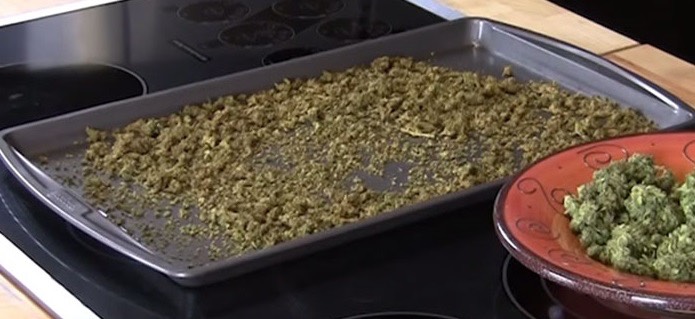
The image is the courtesy of Chef 420
Put ground marijuana into a frying pan wide and shallow enough, or a tray (shown in the picture), or any other dish designed for heating that you are used to. We love using a thermo-glass tray.
Heat it at cannabutter decarboxylation temperature, which is, we mentioned, is 230-250℉ and that equals roughly 110℃. Keep in mind reaching 380℉ (or 200℃) shall kill your THC making marijuana useless since then and cannabutter shall not work consequently.
— The higher temperature you set (in the reasonable range) the shorter time you need for it to be ready.
— At 230℉ (or 110℃) you need about 30-40 minutes.
— At 320℉ (or 160℃) you need about 20-30 minutes.
— Check its readiness by color by the bare eye. Logically, you will need a little experience for that one, but you can see the visible change of color even on your first try.
— Also, you check the readiness of your decarbed marijuana by crushing it with your fingers. It must be felt as super dry, over-dried even, and it goes crushed into quasi-powder with almost no effort.
You’ll gain your experience after an attempt or two. Starting from a smaller amount is a good piece of advice, once you fail you won’t ruin all your harvest.
The ingredients for cannabutter
The ingredients to make cannabutter are:
1 LB. of BUTTER
1/2 OZ. of MARIJUANA BUDS
Yes, that is all we need, simple as that.
— Use essentially butter and not margarine.
— You can use shake, that shall be leaves and stems or trim, then you double the amount of weed for the same amount of butter.
— For the metric system followers: 1 oz, one ounce, constitutes 28 grams, and 1 lb, one pound, constitutes 450 grams. Then you use 420 grams for better luck in cooking, ha-ha.
— You can use a smaller amount of marijuana for the recipe, then you result in a less potent cannabutter. Not an issue at all as soon as it reflects your goal, either you have no wish to allocate that much weed for a mere cooking experiment. All directions stay the same for a smaller amount of weed in butter or a smaller amount of butter.
Will neighbors smell the cannabis I am cooking?
Oh, you’d better believe it, neighbors shall smell cannabis. An important message is when you cook cannabutter you be ready for a thick marijuana smell clouding around your kitchen and beyond during the whole period of cannabutter cooking. Means 6-7 hours.
Neighbors or wandering passers-by-your-window shall certainly guess what you are doing. We have cooked a few times in a yacht docked in a touristic port in the middle of summer, the number of smiles around in the marina we have joyfully contemplated.
Cannabutter directions
— Melt the butter at low fire and low temperature. Keep it in the “just about to start boiling” condition: small bubbles you allow, but a full-scale volcano you avoid.
— Add up decarboxylated marijuana buds into the liquid butter. Stir carefully.
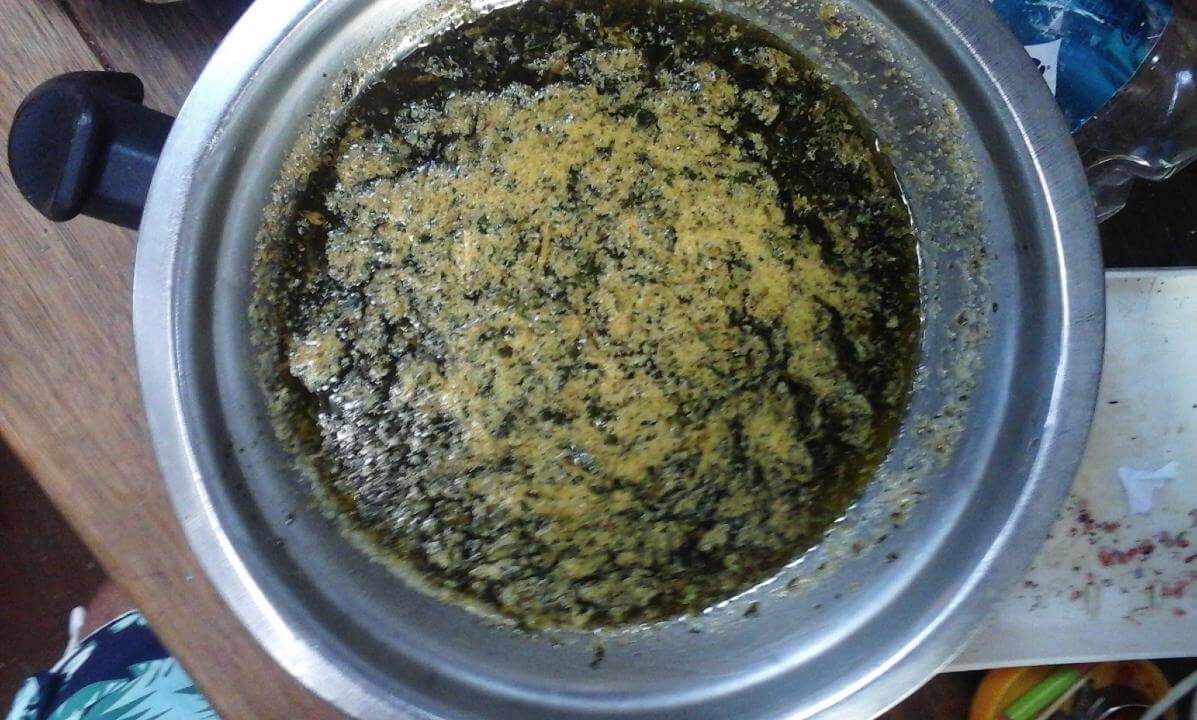
In the picture the Cannabutter quasi-boiling slowly (weed is in).
— Continue at a slow fire, or switch to “Bath Marie” (this is when a pan is placed over boiling water) and keep it going for the next 6-7 hours.
— Yes, it takes that long!
— Filter the melted butter from the remains of the weed tissue. Use a classic paper filter or a medical gauze, the latter I prefer to use (as shown in the picture).
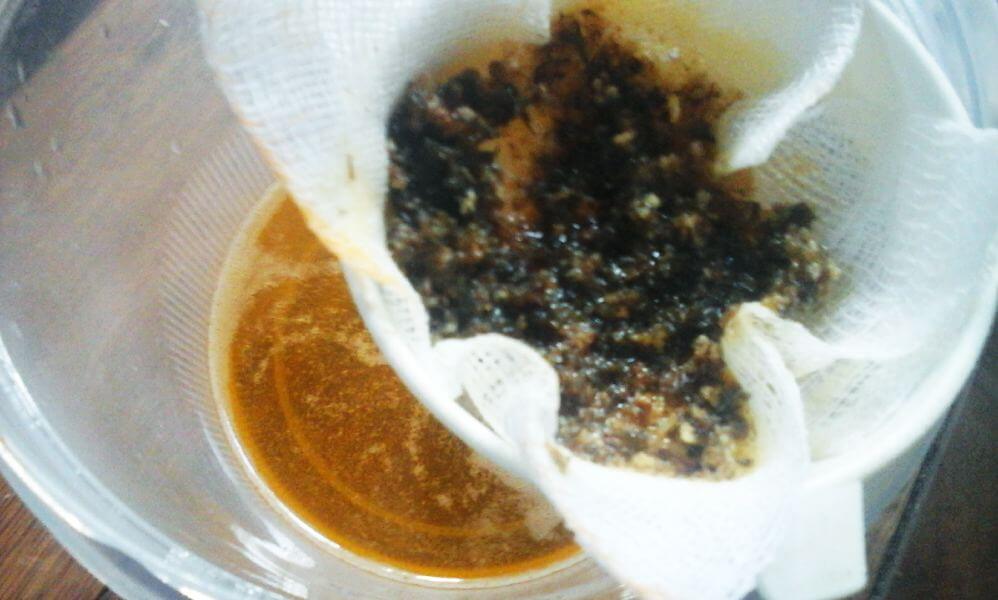
In the picture we are filtering hot cannabutter.
— The substance left in the filter is the plant tissue and other stuff, and it is already empty at this stage, just throw it away.
— The resulted liquid butter we already may call “cannabutter”, and it is already rich with activated THC and other pleasurable cannabinoids.
— Let it cool down at room temperature, and it’s ready.
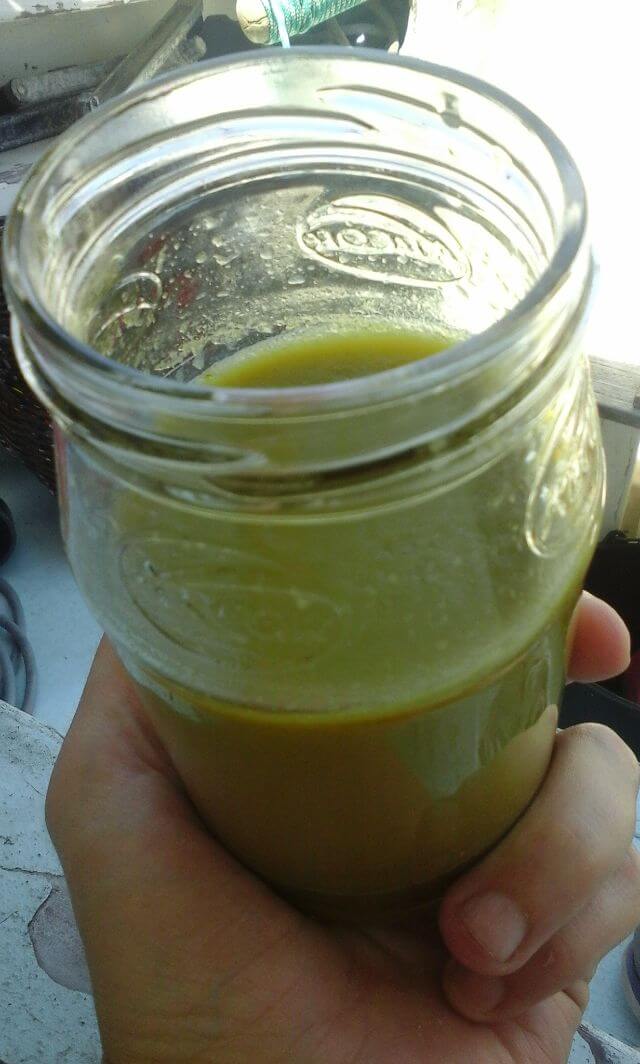
In the picture: ready cooled cannabutter in a glass jar.
You have noticed of course out of these cannabutter directions, the resulting product is more likely a rendered butter, aka ghee, rather than butter, but we bend to the influence of the industry norm and we all call it “cannabutter” in the community.
However, we mentioned ghee (clarified or rendered butter) for the next chapter clarifying that how we store ghee is how we store cannabutter.
How to store cannabutter
As soon as we see now that cannabutter is a clarified rendered butter, better known among cooks as “ghee”, we store cannabutter as we store ghee.
Ghee is cooked by humanity for centuries before any fridge has been even invented, and we suggest the primary purpose of ghee was its storage capabilities. Therefore, the storage of cannabutter (we remind, the latter is technically ghee) inherits the possibility to be put at room temperature for a relatively long while.
— The best container for cannabutter is a glass jar tightly sealed.
— A plastic container shall work as long as it is designed for storing food. We also love to use German-made plastic food containers, but a good old glass jar is simply the best.
— Low humidity, darkness and chill are friends to cannabutter.
— How long does cannabutter last at room temperature? At room temperature, cannabutter should stay well for about 1-2 months safely, and up to 3-4 months reportedly.
— How does cannabutter go bad at room temperature? You need to smell your weed butter before any further usage especially when it was there for longer than one month. Any foreign smell can indicate a problem. A few weeks or a month should be safe.
— In a fridge cannabutter is safe for a few months, peeps report up to 6 months. A rule of thumb is that weed butter lasts longer than regular butter, and is equal to regular ghee.
— In a freezer, there are reports about keeping it for 2 years and on, but just we have failed to keep a jar of weed butter for that long. We suggest knowing the safe storage of weed butter may continue for several weeks is simply a piece of comprehensive information.
— If there is liquid in the cannabutter you shall see how it’ll get separated once cooled in a jar. Yet another reason to use a glass jar is to detect water in the lowest layer. This is not very right, though this is not the end of the world, and you can use such cannabutter, no issue.
However, once the cannabutter gets separated in a jar, just remove all water away. In such a case, butter shall stay on top and water construe a lower layer as it is heavier. Carefully puncture a hole in butter with a spoon or a knife from aside of a “butter cap” and pour out all water.
Do not store your cannabutter with water inside the jar, except that for an immediate term, a couple of days or three, hardly a week. Proper ghee (including cannabutter) must not contain water, because the ideological reason for ghee is removing water and remains of milk out of butter for longer storage. Consider adjusting the cooking process on the next try. Once you’ve got water in it, cook it or eat it, and do not store it for too long.
How to calculate a cannabutter dosage
An overdose of marijuana may become an unpleasant experience, no matter how nonsensical many of us may accept this statement. Indeed, it is a harder task to overdose by merely smoking, but a “victim” most probably shall fall asleep before any bad effect comes. Even though many of us stoners have seen at least once in life another person barking at ants after a cannabis overdose from smoking.
When it comes to edibles, the issue grows. The digestion is a bloody slow-motion compared to the lungs-to-blood mechanics of smoking. The active compounds of marijuana (like THC) make their way towards the liver first, which is already too slow, then they defuse into the bloodstream, only then contracting CB-receptors of the brain. It may take an hour or hours from the moment you eat marijuana till the “high” effect reaches its peak, instead of a few seconds when you smoke.
An example of calculating a cannabutter dosage for edibles
1) Say, you have infused half a pound of butter with, say, half an ounce of weed.
2) You have baked a tray of brownies out of it, where there are 10 pieces of brownies.
3) In this case, each brownie roughly equals less than 1.5g of weed smoked.
You split 14g of weed (half an ounce) into 10 pieces of brownies. You divide 14g by 10 pieces, it results 1.4-1.5g per piece, count each such brownie is an equivalent to a good joint.
The effect from edibles is stronger, that is true, but you are waiting for an effect knowing you have consumed about 1.5 grams. For throwing off you need to eat that whole tray at once.
Other sources suggest trying cannabutter, a spoonful of it. Chew it well and then wait for half an hour or an hour. Fair enough, such should work either.
The effect however depends on many variables. Some of them are: what is already inside of your stomach, how full it is, how well you have slept, and when you smoked last time, finally the effectiveness of your cannabutter infusion process. Practical testing should bring better accurate results to you rather than a theoretical calculation of the dosage.
Effects of consuming edibles compared to smoking marijuana
Just be careful about eating weed, as you shall stay super-high and even higher than that significantly longer. With edibles, it is harder to control your “highness”, compared to smoking. And, whatever promising such may seem for an ideological stoner, be warned that consuming weed as edibles may become a challenge on your first try, but it’s worthy.
Having that said, there shall be no “waves of high” coming repeatedly in a curve, like when you are stoned by smoking, but with the edibles, it shall be more like one big wave and no down periods. You’ll be all way top-high if proper edibles, which may sound funny but it may occur be challenging on the first try.
If a super-high condition is not happening to you, such may mean you probably have washed out in the butter-making technology and you need to improve it.
Benefits of cannabutter edibles
Smoking marijuana versus eating edibles is a personal preference. Both are worth a try. However, there are other reasons why people go for edibles, except that it is tasty.
1) Many people start cooking weed edibles having no wish to smoke. Struggling with hardship to inhale smoke, or impossible to do so as of a health condition, or simply having no wish to smoke — these are common reasons why people find it beneficial to consume weed edibles instead of classic smoking.
2) Getting bored with smoking if one is looking desperately how else to consume marijuana, to get a different high, or merely change something looking for a new feeling. We smoke joints, then switch to bongs and pipes, then swap back, or use everything from the list depending on the occasion. Dear God, why not we attempt edibles? This is just another brilliant option and an endlessly tasty option.
3) Smell produced by smoking may become a serious reason to consider edibles. Imagine, having a handful of candies infused with marijuana in a pocket you stay “safe” in the surrounding of people who are still locked by the stereotypes of the past century. Edibles become a matter of convenience. Sharing such “candies” with friends is fun too.
4) Maybe you are seriously keen on cooking, having a bunch of favorite recipes you are proud about and a couple of cooking secrets on top. We suggest it is a matter of time for you to start making cannabutter and infusing weed edibles with it. This is love and the same reason, why marijuana images avalanche the internet and social networks being delivered by artists or photographers, who are also stoners.
Can I cook marijuana skipping cannabutter at all?
Yes, you can cook and eat decarboxylated (“decarbed”) marijuana without cannabutter. A good example is a weed smoothie containing no butter at all, or you can use decarbed marijuana as a spice for seasoning as they do it in Cambodia, India and god-only-knows where else.
I swear I saw with my own eyes in Cambodian “happy pizza” place, in Seam Reap, my chef threw a batch of decarboxylated weed, maybe eight grams or about, into pizza for us two for an early dinner. We ate and we were in la-la-land after one hour till next noon.
Ye-ah, Cambodians cook weed for thousands of years, I confirm they pick wilder and stronger marijuana than what we have here in the market.
Yoo-hoo! CHEF 420 is in this “photo”!!
That’s all for now.
Enjoy making your cannabutter.
Mon, 16/Oct/23
